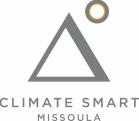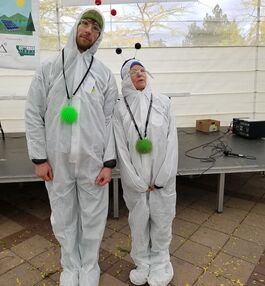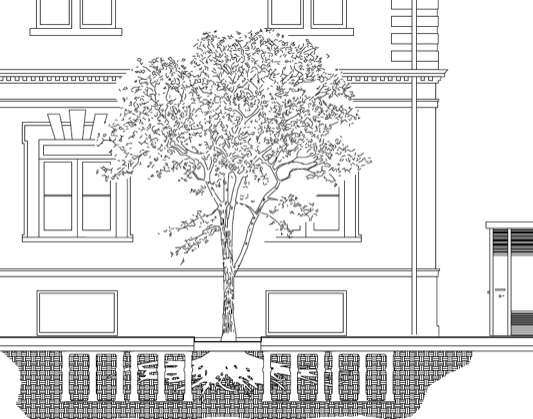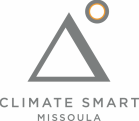|
Missoulians thought it was just another strong gust of wind Saturday afternoon when the flaps of the Caras Park tent billowed, but soon they realized that it was the result of two unusual visitors and their spaceship. Al and Ian, from Planet Alien, made a surprise visit to Missoula’s Clean Energy Expo on September 28th to understand how energy works here on Earth. Al and Ian spent time with community experts as they unraveled a series of confusing topics about our current technology and the future of energy on Planet Earth. They were kind enough to share their translators’ recordings with us so we could share it with everyone who was not able to meet our intergalactic guests at the Expo.
AL: Ian, you don’t have your translator on! No one can understand anything you are saying. IAN: Shoot. Thanks, Al. Where are the enlightened ones? We need to speak with them. I have many questions. AL: Yes, I want to know how they power their civilization. Our Great Leader provides energy for our planet only, so what do they use? Do they use the dinosaur juice? IAN: Dinosaur juice? What are you talking about, Al? AL: You saw it! The dinosaur juice from the pump. The sign said S - I - N - C - L - A - I - R. People used the plastic card and then they funneled the dinosaur juice into their spaceships. IAN: Yes, yes. I remember now. I’ve found an enlightened one! Enlightened one, what is this dinosaur juice and how does it work? Enlightened One: I think you mean gasoline, which is a fossil fuel. So you’re right - it is sort of like “dinosaur juice.” It may seem crazy to you, but for the past century we have been digging into the Earth for fossil fuels to power our civilization. We’ve used so much dinosaur juice though that it’s changing our climate, and it’s creating negative effects for people, animals, and plants all over Planet Earth. Luckily for you, you’re visiting at a time when we’re moving away from fossil fuels and towards other ways to power our civilization. We call it clean energy, and we’re celebrating it today at this Expo. IAN: Clean energy? What type of juice is clean energy? Enlightened One: Clean energy means things like power from the sun, wind, and water. AL: Sun juice! Wind juice! This is very exciting. We know a little about sun juice from our own planet. IAN: Yes, we also use sun juice, but we have three suns that bask our planet in perpetual light. We have to wear night goggles to sleep. I heard you have problems with something in-the-mittens? AL: It’s nothing about mittens, Ian! You mean intermittency. Is intermittency a problem? I only see one sun here and my understanding is that your planet is only lit for part of the day. How do you power your civilization at night? And, could you please explain what intermittency is to Ian so they don’t bring up mittens again? Enlightened One: Intermittency is the idea that energy from renewables isn’t constant - the sun isn’t always shining and the wind isn’t always blowing, but there are still things we can do to lessen the impact of intermittency. The main things we’re focusing on here one Earth are creating dispatchable renewable energy, load flexibility, geographic balancing, and storage. You’ve probably already heard of storage, and there has been a lot invested in storage here. We’re trying to make better batteries so we can store energy when the sun is shining a lot, for example, and use it when it’s dark outside. As for the other three things we’re working on, dispatchable renewable energy comes from sources like hydropower, which can be used on demand. We can also locate our different sources of renewable energy in different geographic locations, and we have models that can show us how to balance our generation sites appropriately. Finally, we can invest in load flexibility and demand response, which uses smart appliances and other technology to quickly lower energy demand and balance the grid. AL: This is very innovative! We are impressed that you are able to do these things without a Great Leader who provides all of your energy. We are so lucky to have our Great Leader who not only provides clean energy but provides it for free. How do you pay for your clean energy? Enlightened One: It’s great that you ask! Most people who want to buy clean energy in Montana install solar panels on their homes - IAN: These panels make the sun juice? Enlightened One: Yes, this is what makes the sun juice, or what we call solar energy. The price of solar panels continues to go down. It’s cheaper now than ever, and there are both federal and state tax credits available to help people afford to install the panels. There’s also low-interest financing available from both the Montana Department of Environmental Quality (DEQ) and Clearwater Credit Union. With increased research and development, the trends indicate that it’s likely the cost of solar will continue to go down. AL: You speak very excitedly about these descending numbers. IAN: Of course, Al! It’s very exciting that the cost of renewables is going down. But if the cost of renewables is going down, why do they have signs that say 0 - 50 - 100. Those numbers go up! And 0 + 50 do not equal 100. What is 0 - 50 - 100? Enlightened One: 0 - 50 - 100 summarizes our main sustainability goals as a community. 0 means Zero Waste. With the help of our Zero by Fifty plan, Missoula’s pathway to Zero Waste, we hope to send almost nothing to the landfill by 2050. 50 means that 50% of Missoula-area trips are made by sustainable modes by 2040: walking, biking, busing, scootering, skateboarding, or carpooling. Anything but steering your spaceship by yourself! Finally, 100 means 100% clean electricity for Missoula by 2030, 100% of Missoulians are engaged in sustainable actions, and climate solutions work for 100% of Missoulians. IAN: 50% sustainable trips, hm. Can you travel intergalactically? AL: No, of course they can’t Ian! You know we’re the first to do it. Even though they can’t yet visit us on Planet Alien, I see them move at incredible speeds. Are there clean ways to power your movement? Enlightened One: Yes! We have a very exciting new addition to our community transit system: Mountain Line’s electric buses. Six, 35-foot zero emission buses arrived in Missoula in July of 2019, and there are plans to transition more of the fleet to electric buses. As our grid has cleaner generation, these buses will be even more environmentally sound. In addition to riding the bus, you can also bike or walk if you want to opt for cleaner transportation. Making sure that people can safely and easily bike or walk to work is something our urban planners think about a lot here. We’re also trying to promote denser and smarter urban development so people can live near where they work, grocery shop, play, and all of the other things one needs to live a happy and healthy life. AL: Wow, there is much possibility! Enlightened One: Yes, it’s very exciting! We’ve made a lot of progress but there is still much work to be done. Hopefully we’ll be using even more sun and wind juice the next time you come. IAN: Yes, and I hope you stop using all of that dinosaur juice. Enlightened One: Me too, Ian. Me too.
0 Comments
The other day, I was talking to someone who recently moved to Missoula from the southwest. “There are so many trees here!” she exclaimed. Missoula does have a lot of trees - over 30,000 just on city-owned right of ways! - but that fact is no happy accident. The robustness of our urban forest is a result of dedicated folks in local government, community advocacy organizations, and regular citizens who are committed to keeping this cornerstone of our local ecosystem thriving. And it’s not just trees, either - it’s shrubs and grasses and native plants of all kinds in our urban and surrounding areas that contribute ecological diversity, habitat, and ecosystem services that support climate resiliency and community health. Urban forestry was the focus of October’s monthly meetup, and we were thrilled to be joined by Marie Anderson with the City of Missoula’s Urban Forestry division and Karen Sippy with Trees for Missoula. As always, the conversation was wide ranging and inspiring, but also raised plenty of questions and highlighted opportunities to do more on this issue. Trees as a climate solution Trees in particular have recently occupied headlines as researchers have attempted to calculate just how much potential they have to store carbon. We know there’s no silver bullet when it comes to climate action (if hunting season metaphors are your thing, climate solutions are more like silver buckshot). But it’s no wonder people are excited about trees: they have a whole host of benefits beyond taking CO2 out of the air. Here in Missoula, Climate Smart has partnered with the City and County over the last year and a half on a comprehensive Climate Resiliency Planning process, and it turns out that trees - and shrubs and green infrastructure - are so integral to building our community’s climate resilience that they are part of 8 out of 9 sectors represented in the plan (draft to be released this fall for community input - stay tuned!). Growing our urban forest and green infrastructure: education Whether on public land or private, how do we maintain the health of our urban forest given its importance to ensuring a climate-resilient Missoula? As with so many things, education is key. Some of the education that’s needed is at the citizen level: for example, Trees for Missoula has been working to ensure residents have all the information they need to care for new trees that have been planted on city boulevards, which are generally the responsibility of adjacent property owners - not everyone knows this! Even well-meaning folks with water conservation in mind don’t always know that watering trees and shrubs (and yes, even reasonably-sized lawns!) is okay here, because excess water generally makes its way through our porous valley soils and back into the resilient Missoula Aquifer under our feet. In fact, many of our street trees (there are over 116 species in our public urban forest!) require additional water beyond annual rainfall. Learn more about watering trees HERE. We can also improve education within our schools. Kids may learn about trees in biology class or understand how they take in CO2 and provide oxygen for us to breathe, but the practical tools to grow and care for trees are a gap that Trees for Missoula and the City Forestry department are working to fill with a new educational course for Big Sky High School’s agricultural cohort. This class has the potential to be replicated in other schools, so kids across our community are equipped to be tree stewards. Education is also needed within local government agencies tasked with supporting our urban green spaces and builders and developers. The good news is that this education is happening, and even within the last few years, there’s been a shift in how city departments consider green infrastructure, from planning to development to permitting, Missoula Water to Development Services and engineering. Going forward, it’s even more essential to integrate these kinds of climate resiliency considerations into development and redevelopment projects. Silva cells are an interesting example of this: a “suspended pavement system” that allows sidewalk trees to root much more deeply and thrive, Marie and Karen shared how this technology is now becoming the default for many of the redevelopment projects downtown, where more trees can help make pedestrian areas cooler and actually extend the lifetime of asphalt and pavement.
|
AuthorsAbby Huseth Archives
July 2024
Categories
All
|



 RSS Feed
RSS Feed


